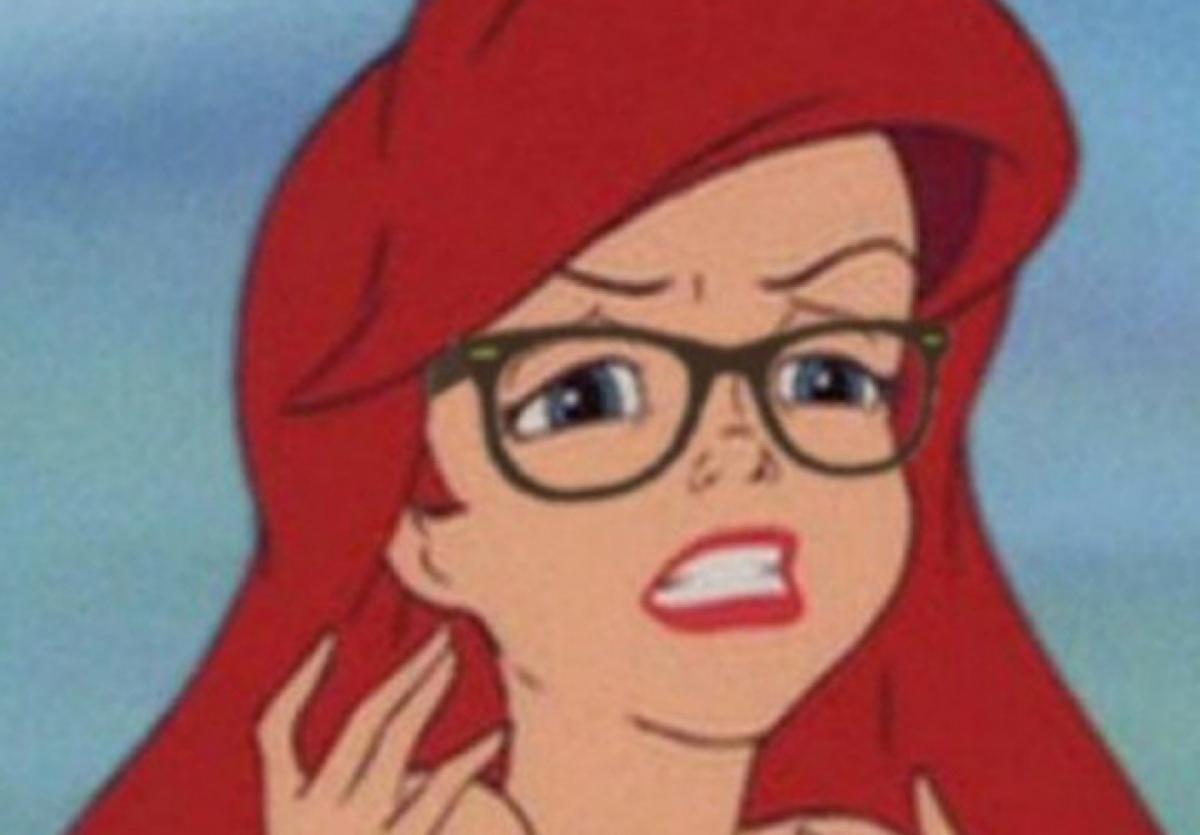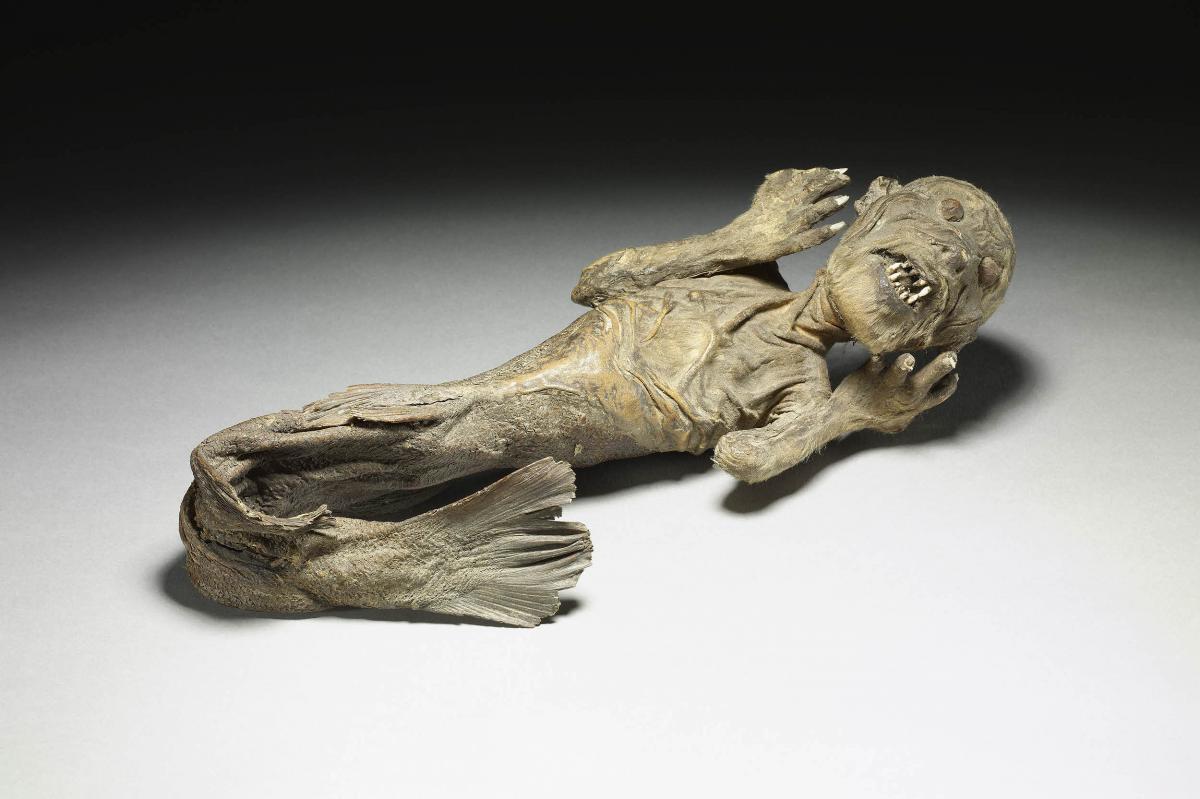
This was the game. In the real world, I was lying on the sloping edge of Melton Leisure Pool sometime in the 1980s, shuffling my child body down into the water; in my imagination, I was on the sea shore and the irresistible ocean had come to take me and make me a mermaid. It was a game played entirely alone, because its object was utter and perfect passivity.
Some people never stop playing mermaids. At conventions such as Mer-Mania in North Carolina, Merfest in Florida, or Merfolk UK, hundreds of adults gather to, as the Merfolk website puts it, “transform [themselves] into a magical mythical being from the depths of the ocean” and swim with the “Mer-community”. (These gatherings are not uniformly idyllic: Mermania 2017 was reportedly riven with cyberbullying and physical confrontations between merfolk, leading to the Mail dubbing it “the DARK SIDE of the real-life mermaids”.)
Most attendees at these conventions are mermaids, though there are a few mermen; all come with their own tail, which range from thirty-quid budget models to fully swimmable, sumptuously shaded, realistically scaled silicone versions that cost nearly three thousand pounds. Generally speaking, the more expensive the tail, the more disabling it is to the wearer.
“The silicone ones are a lot harder, it takes about two people to get you into them,” explains Tamara Edwards, a 30-year-old professional mermaid who appears every Sunday at Bristol Aquarium, telling stories to rapt children from her station by the ray tank. (Sadly, there is nowhere for Tamara to swim at the aquarium.) Even in her more convenient “land tail”, Tamara has to be moved about in a wheelchair. She wears leggings underneath in case of a fire alarm.
For Tamara, being a mermaid is more of a job than a lifestyle. She hasn’t been to any conferences, and while she says her current tail cost her “a small fortune”, her costumes are carefully balanced work expenses rather than the money-no-object purchases of a passionate hobbyist.
Even so, it’s a job she does as much from love as necessity: she originally pitched the idea of appearing as a mermaid to the aquarium, and continues to work there at weekends as well as doing children’s parties, despite working from Monday to Friday in a bank.
What do her day job colleagues make of her mermaid moonlighting? “One of my managers admitted that he thought I was weird,” she laughs. “Then he realised I got paid for it and he thought, ‘OK, it's just a job.’”
In fact, Tamara’s mermaid obsession goes back to childhood. “I was banned from taking baths as a child because I used to put my head under and hope that if I stayed there long enough I would reach a mermaid,” she explains. “I basically stopped believing in mermaids after [I stopped believing in] Santa.” Even now, there’s a part of her that thrills to the what-if possibility of mermaids living at the bottom of the sea. And though her ocean-obsession predated Disney’s 1989 adaptation of The Little Mermaid, she says that when she saw the film, “it was like all my dreams in one package.”
That film kicked off what’s referred to as “the Disney renaissance”, using the story of Ariel’s transformation to launch the transformation of Disney as a whole, from a creatively bankrupt embarrassment to an Oscar-snaffling Leviathan.
“Disney’s little mermaid is pitched as half-fish, half-feminist”
While the basic features of the mermaid’s metamorphosis remain constant between Andersen’s 1837 story and the Disney movie, much else is changed. Although both Disney’s Ariel and her unnamed fairytale prototype are driven to seek the sea-witch’s dangerous aid because of their forbidden love for a human prince, Disney’s little mermaid is pitched as half-fish, half-feminist, rebelling against the patriarchal dictates of her father King Neptune. “Betcha on land they understand / Bet they don't reprimand their daughters / Bright young women sick of swimming / Ready to stand,” sings Ariel in her showstopping song “Part of Your World”, making a willing to swap your lower body for a more male-gaze pleasing version sound like the actions of a sea-bound suffragette.
Where Ariel gets her happy ending up there in the sun, the Little Mermaid of the Hans Christian Andersen’s source text is less fortunate. She gives her tongue to the Sea Witch in exchange for a “bitter, fiery draught” which turns the Mermaid’s tail into “shapely legs” with a feeling “as if a two-edged sword struck through her frail body”. This new form causes the Mermaid great anguish: “[E]very footstep felt as if she were walking on the blades and points of sharp knives”. Her reward for all this suffering? The prince rejects her and she cannot go back to her family. The Mermaid is cursed to death and, since mermaids in this story have no souls, utter oblivion; only a last-act rescue by the mysterious Daughters of Air gives her the possibility of redemption, transforming her into an ethereal body with the chance to win an immortal soul through good works.
Bleak as the Andersen story is, and as much as it fetishises the masochism of feminine self-sacrifice, I prefer it to the Disneyfied account which has all the same misogyny (witness the glorious female malignity of the fleshpot villain, the Sea Witch) while presenting Ariel’s voiceless abjection as a free and feminist choice – a manoeuvre that's typical of the processes Susan Faludi described in her 1991 book Backlash, whereby the language of women's liberation is hijacked in the service of anti-feminism. Andersen’s vision of being a woman is cruel, but it’s at least honest that subjugation is a poor path to happiness.
Critics have argued that The Little Mermaid also tells a very particular truth about Andersen’s own life. Andersen felt profound same-sex attraction, at a time when for a man to love a man was seen as a pathological access of womanishness.
Like the little mermaid, Andersen worshipped his prince, and like the little mermaid, her was rejected. As he wrote to his friend Edvard Collin, who could never requite the depths of Andersen’s affection: “[M]y sentiments for you are those of a woman. The femininity of my nature and our friendship must remain a mystery.” Stricken with an emotional life so entirely incompatible with his world, perhaps it’s no wonder that Andersen’s stories so often articulate fantasies of transformation (not only in The Little Mermaid but also in The Ugly Duckling), self-abnegation (The Steadfast Tin Soldier) and, sometimes, ruinous exposure of one’s true self (The Emperor’s New Clothes).
A few readers have gone still further, arguing that Andersen was not only same-sex attracted but cross-sex identified: in other words, when he referred to “the femininity of [his] nature”, he was announcing himself as what we would today call transgender. As a theory, this has several demerits – not least imposing an ahistorical understanding of gender identity that would not have been available to Andersen, and ignoring the way that the pervasive homophobia of his era may have shaped his self-perception. Nevertheless, Andersen and mermaids hold a totemic place in trans iconography.
“The mermaid is always a figure of personal transformation, rather than revolution”
In the 2007 episode of the documentary series 20/20 that introduced Jazz Jennings to the world as a transgender girl, presenter Barbara Walters shows us Jazz’s bedroom “filled with girly things – dresses, dolls and especially mermaids”. “All of the male-to-female younger transgender children are obsessed with mermaids, and I believe it’s because of the ambiguous genitalia,” explains Jazz’s mother Renee. “There’s nothing below the waist but a tail, and how appealing is that for someone who doesn’t like what’s down there?” On Jazz’s YouTube channel, you can watch videos of the teenager swimming in a purple silicone tail; at one point, fans and aspiring mermaids could even buy their own Jazz-designed sets of fins.
In the book Becoming Nicole, which recounts how the Maines family supported their son Wyatt through the process of transition, we learn that one of the first signs of Wyatt’s “essential femaleness” was an obsession with Disney’s film The Little Mermaid. For trans writer Jos Truitt, The Little Mermaid is “a trans fairy tale”. “I identified with [Ariel] instantly,” writes Truitt in a blogpost. “Her problems made so much sense. Her whole world was wrong – she knew where she belonged, but no one could understand. And she didn’t care, she went for it anyway, became the person she knew she should be in the world where she knew she belonged.”
And of course, the campaign group Mermaids, which supports trans children and their families, takes its name from the mythical creature.
But the mermaid is always a figure of personal transformation, rather than revolution. In the film, Ariel longs to become “part of your world” – that is, Prince Eric’s – rather than changing her own. She never does stand on her own two feet, even when she gets them: she just slips from being a daughter to being a wife.

Andersen’s little mermaid escapes, but only by embracing obliteration. Before Hans Christian Andersen, mermaids were seductive nightmares of the deep – a warning to stay away from the rocks. In the the nineteenth and early twentieth centuries, ersatz mermaids taxidermically spliced together from a monkey and a fish were freakshow fixtures.
And even in her alluring modern form, there is a thrill of something horrible in the mermaid, as she entices us to wreck ourselves on a fantasy of feminine submission. She is still my favourite monster.